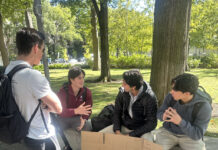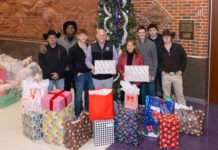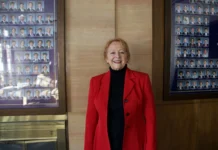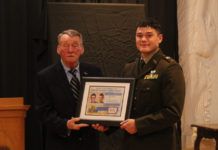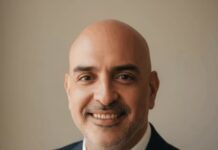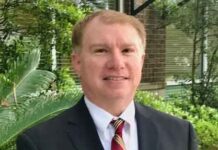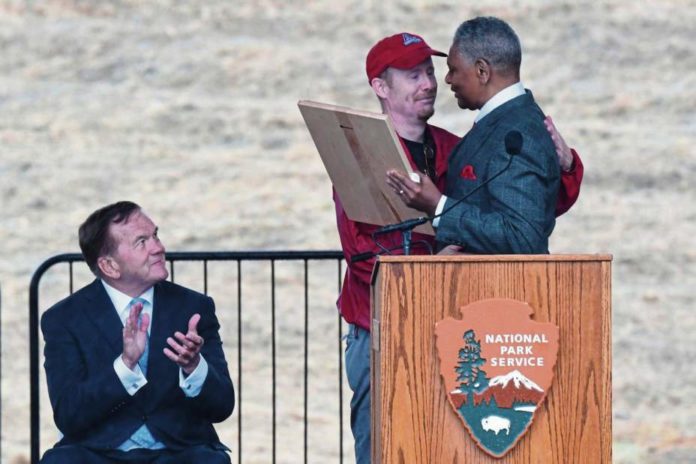Chi Phi brother leads efforts to establish Flight 93 memorial
Looking out across the landscape filled with lush grass, wildflowers, and trees, one would never suspect the tragedy that occurred there just seventeen years ago. The only visible reminder of that day sits at the edge of a grove of hemlocks, the trees themselves now recovered from the damage they sustained. Now that the scars on the land have healed, there is only a boulder left to mark the impact site of United Airlines Flight 93 – the Sacred Ground. Though the physical reminders of the crash are gone, the wounds of loss are still fresh in the hearts of the friends and families of the heroes of Flight 93. For seventeen years, Chi Phi brother Gordie Felt, Alpha-Chi 1985, has sought to help heal those wounds through the establishment of the Flight 93 National Memorial. He knows well the feelings of loss; his brother Ed was one of the forty crewmembers and passengers who lost their lives when Flight 93 crashed.
It Could Have Been Any of Us
“Ed and the 39 other passengers and crewmembers that were on Flight 93 were all in many ways very unique individuals from all over the world. But also, in many ways, they were just like the rest of us; they were parents, they were brothers, they were spouses. I think that part of the story of September 11, particularly Flight 93, is that it could have been any of us on that flight,” Brother Felt reflected.
It was the normalcy of the flight and of the people on it – college students, retirees, teachers, and Ed, who worked as a system engineer for a software company – which makes the heroic fight that the passengers made in their final moments all the more remarkable.
Among the many calls and recordings from Flight 93 on that day – including the Cockpit Voice Recorder which captured the final words of the passengers who breached the cockpit and attempted to retake the plane – is the final cell phone call from Flight 93, and the only one to reach a 911 operator, made by Ed. His last-minute call to ground personnel allowed the operator to contact emergency services in the next county over and inform them that a large, hijacked commercial flight had been taken down – a fact that had not yet even reached the military. Had anyone survived the crash, Ed’s final call to alert first responders to the scene would have been lifesaving.
Memory
Within hours of first responders arriving from all over Somerset County, local citizens were the first to establish a memorial for the forty heroes. And they have been there with the Families of Flight 93 ever since.
“It’s been unbelievable,” according to Brother Felt. “That whole community has really become an extension of our greater Families of Flight 93. They have opened their arms to us as family members and accepted this Memorial with a certain degree of pride; they were the first ones who were there.”
The Families of Flight 93 has worked hand-in-hand with the local community, National Park Service, the National Park Foundation, and the Friends of Flight 93 (a similar organization to their own) to create the Flight 93 National Memorial. This September, seventeen years since the day that changed the United States, the final piece of the Memorial was put in place.
Uncertainty
Though today the Flight 93 National Memorial is now complete, just a few short years ago it was nearly a vision unfulfilled. As the tenth anniversary of 9/11 approached, the government and civic organizations had hit a brick wall while fundraising for the Memorial. Unlike the other two sites that met with tragedy that day, Shanksville had neither the same federal funding as the Pentagon nor were corporations moving to back the Memorial like those which had lost employees at the World Trade Center. Simply put: They were out of money.
“We really were starting with nothing,” Brother Felt said while recalling the fundraising efforts they undertook. Though a small portion of the site was donated, the task of raising more than $40 million for portions of the Memorial itself fell on the Families of Flight 93, the National Park Foundation, and other organizations.
Creation
The Memorial is now an established site within a vast tract of parkland, but the area surrounding it is, in many ways, still as rural and difficult to access as it was in 2001. Approaching the site through the many winding roads of western Pennsylvania, visitors are welcomed by signs along the way directing them to the various historic covered bridges, the occasional tavern, and stone homes dating back to past centuries. Entering the gates of the Memorial requires that visitors still drive for several minutes before reaching the museum and visitors center, and the Sacred Ground itself still further.
The Tower of Voices was designed as imposing; the 93-foot tall structure is the first piece of the Memorial that visitors see when entering the site. Its stark, industrial appearance contrasts with the flowery, green environment that now surrounds it. Its height is no coincidence; architect Paul Murdoch built numbers into how the Tower memorializes the forty heroes of Flight 93. Forty chimes adorn the Tower, each measuring between five and ten feet long and weighing up to 150 pounds. Each chime creates its own unique sound as the wind passes through – each one with its own voice.
Dedication
As the final piece of the Flight 93 National Memorial, the Tower of Voices provided a sort of closure, not only for the project itself, but for families, friends, and the community. Despite the chilly weather and steady rainfall during the dedication on September 9, a devoted showing of onlookers was present for the ceremony.
Brother Felt sensed the effect that this final ceremony had while watching with other spectators; families and friends of those on Flight 93, local residents, first responders, and complete strangers who came to show their support.
Speaking on behalf of the Families of Flight 93 that day was Calvin Wilson, brother-in-law of First Officer LeRoy Homer Jr. In the midst of describing the partnerships and friendships formed, the land purchased, and the money raised, Mr. Wilson reflected, “and then there’s the families. The Families of Flight 93. That wasn’t just a title for us; we are truly a family. We bickered, we hugged, we yelled, we screamed, but we had one goal in mind; and that was to make sure that our loved ones were remembered not only by name, but for their actions.”
“There is one individual,” he continued as he fought back emotion, “who has been like the father figure, the referee, our representative, across the nation, in the families, and in the executive group. He has represented us strong for fifteen years. This man has led us not from the front, not from the back, but at our sides. We can’t tell him enough how much we appreciate it and how much we love him, but we tried.” Mr. Wilson invited Brother Felt to the stage, where he was presented with a plaque as a thank you from the families for his efforts as President of the Families of Flight 93 for fifteen years.
Brother Felt and others were then led to the base of the Tower. There, family members and dignitaries officially dedicated the final piece of the Memorial and opened the chimes. As an ever-silent audience looked on, the winds sweeping through the field hit the Tower, which began its song for the first time.
Future
With the Flight 93 National Memorial complete, Brother Felt’s work would seem finished; but this is far from true. As life moves forward and the Families of Flight 93 continues to work toward preserving the memories of the forty heroes, he intends to continue working at their sides to support the Memorial and the community which has formed around it. The memory of the selfless actions of Ed and the other thirty-nine heroes of Flight 93 will continue to inspire awe, humility, and reverence for generations to come.



